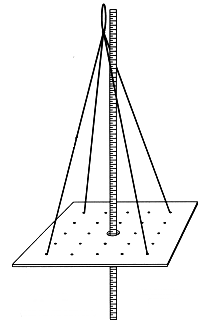
[Table of Contents] The Grazing
Wedge Page
The concept of "THE GRAZING WEDGE" continues to elude most folks interested in grazing, including the majority of all those in the USA who are directly advising dairy graziers.
Actually, many experts talking at grazing seminars don't have a clue about the importance of the "Grazing Wedge" or even what it is. That is why they end up spouting nonsense about what to plant and how to build fence while totally ignoring Voisin Grazing Management principles.
The establishment and maintence of a "Grazing Wedge" is essential to measuring success and to further progress. Hopefully, working through the following graphics will convince folks to pay attention to their "Grazing Wedge".
 The graphs below are intended for use with
Bluegrass/White clover or Perennial ryegrass/White clover
pastures.
The graphs below are intended for use with
Bluegrass/White clover or Perennial ryegrass/White clover
pastures.
This type of low growing, dense pasture will have about 432
pounds of DM per inch when measured with a homemade rising
plate meter.
Those folks trying to graze hay type plants will need to use a different formula for a year or two until their pastures evolve to Bluegrass/White clover or Perennial ryegrass/White clover pastures -FWO
Please see:
Graze-L Archives Referring to the "Grazing Wedge"
An Acrylic Plastic Weight Plate for Estimating Forage Yield
Pasture Plate Construction Details